One of Japan’s oldest cooking vessels, the earthenware donabe (Japanese clay pot), remains a highly versatile tool in today’s kitchen. This one-pot wonder is perfect for cooking hot pot dishes, stews, Japanese rice, and more. Today, I’ll guide you in selecting the best donabe for your needs.
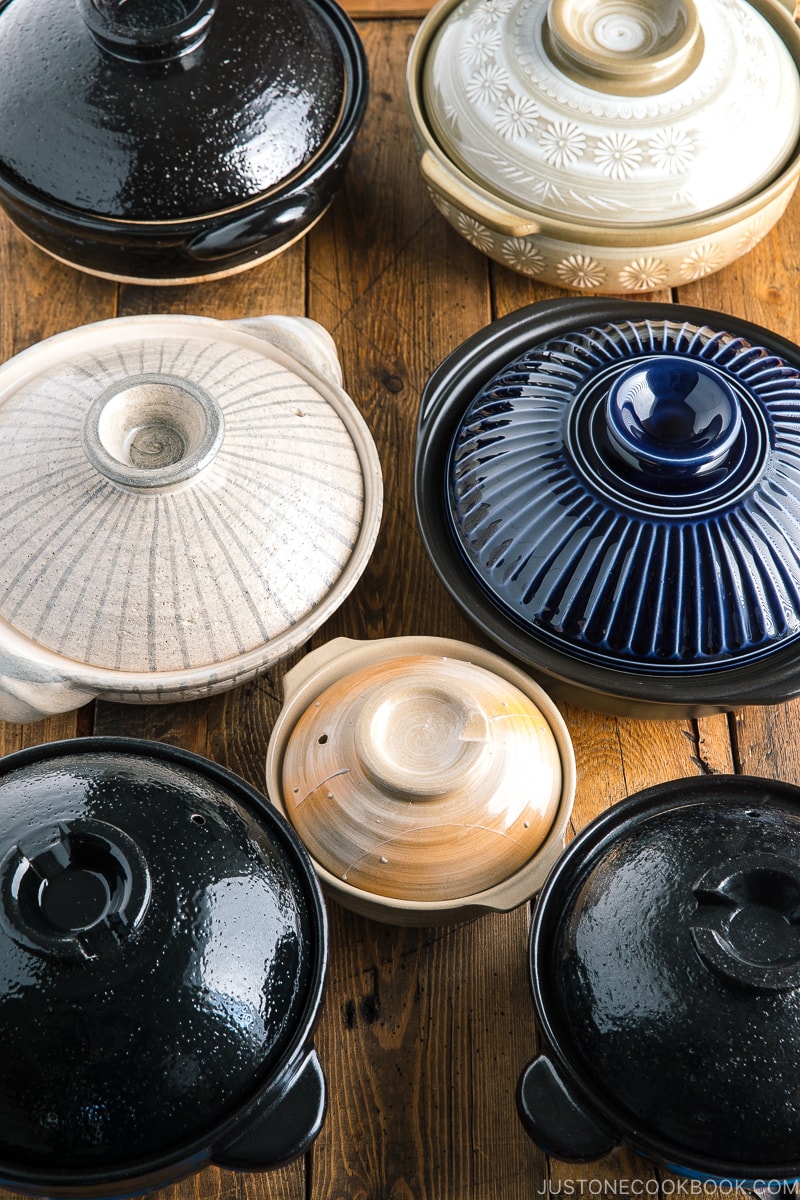
During the winter months, Japanese families love to gather around hot pot dishes, called nabe (鍋) or nabemono (鍋物). Popular nabes, such as Shabu Shabu and Sukiyaki, are often cooked in a traditional Japanese clay pot called a donabe (土鍋).
After receiving many requests from readers about where to buy donabe, I’m thrilled to finally carry a curated selection of donabe at my online store, JOC Goods. In this guide, I’ll cover the basics—from the benefits of clay pot cooking to choosing the right donabe for your heat source.
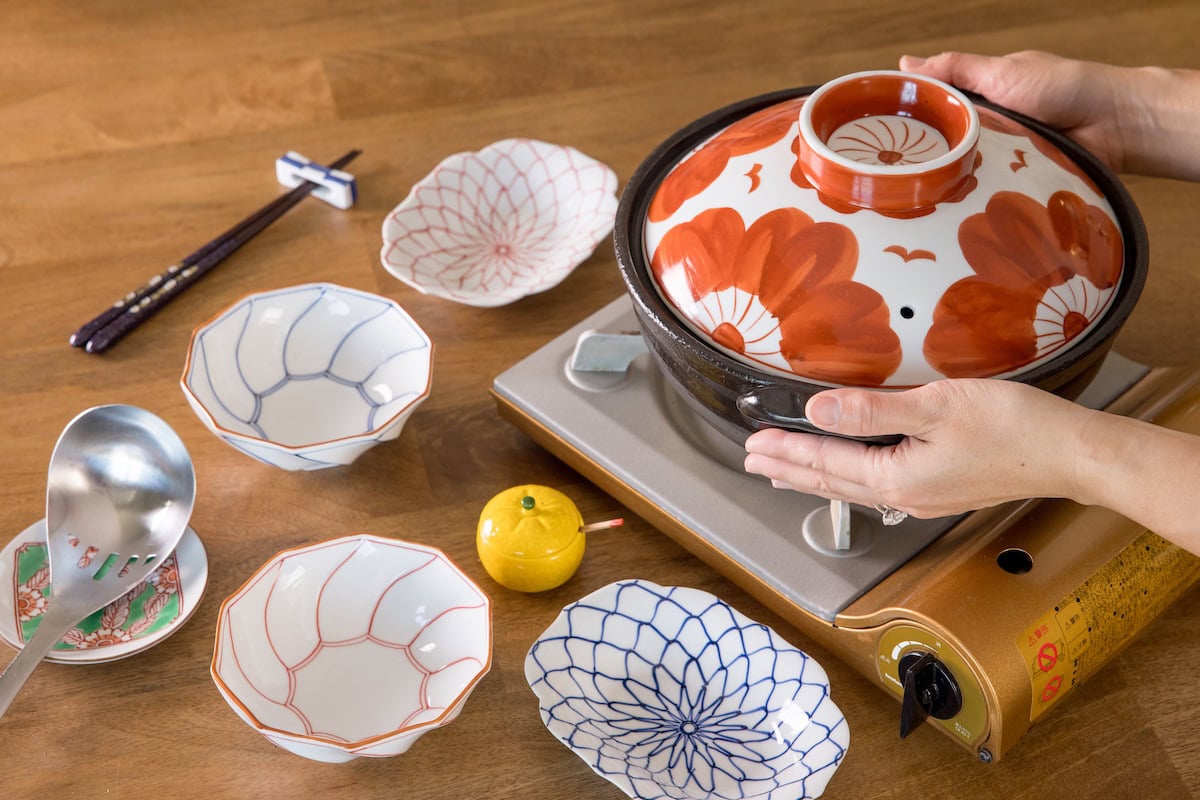
Table of Contents
What is Donabe?
A donabe is a centuries-old Japanese clay pot made from special clay. It’s most commonly used for hot pots but is incredibly versatile for everyday cooking. Similar to other clay cookware, like Chinese clay pots or Korean ttukbaegi, the donabe is perfect for soups, stews, steaming, roasting, and even cooking the best rice you’ll ever taste!
Thanks to its ability to retain heat, the donabe ensures gentle, steady cooking, making it ideal for dishes that require liquid and long cooking times. It’s truly a one-pot wonder, especially for rice lovers.
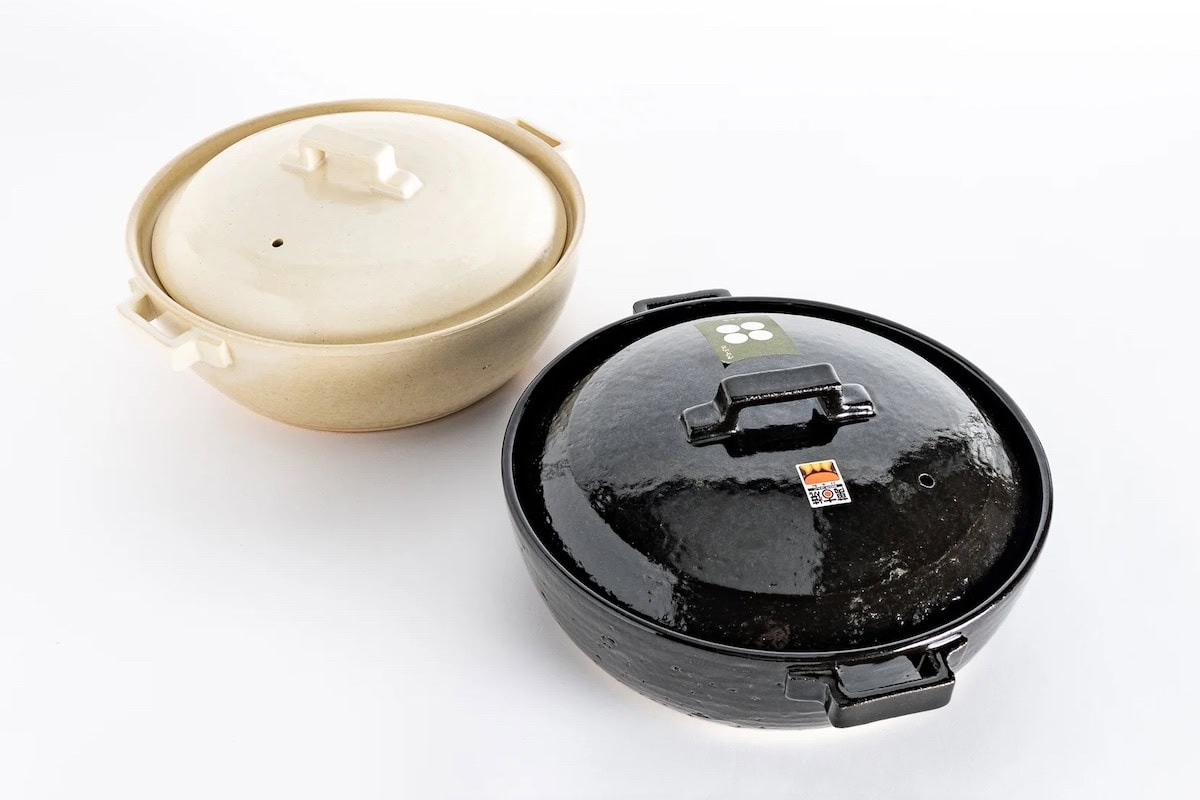
Different Types of Donabe
Different clay pots have unique qualities based on the materials used. Here’s a look at the most common types:
- Banko Ware (Banko-yaki, 萬古焼)
Made in Komono-cho and Yokkaichi City, Mie Prefecture, Banko ware accounts for 80% of Japan’s donabe production. It’s highly heat-resistant, perfect for open flames and dry cooking. With a smooth, glossy surface and various designs, Banko ware is both durable and beautiful. - Shigaraki Ware (Shigaraki-yaki, 信楽焼)
Produced in Shigaraki, Shiga Prefecture, this pottery uses coarse soil for excellent heat resistance. It’s safe for gas stovetops and direct fire, making it durable and long-lasting. - Iga Ware (Iga-yaki, 伊賀焼)
Made in Iga City, Mie Prefecture, Iga ware is known for its high heat resistance and retention properties, ideal for slow-cooked dishes. Its natural colors and rough texture add charm to the donabe. - Ceramic Pots (セラミック鍋)
Unlike earthenware, ceramic pots are smooth and non-porous, so they don’t require seasoning. They’re functional, convenient, and compatible with induction heating (IH) cooktops.
- The donabes at JOC Goods are currently Banko ware, handpicked to bring the best of Japanese craftsmanship to your home. We are also in the process of sourcing Shigaraki Ware donabe, which will be available online soon.
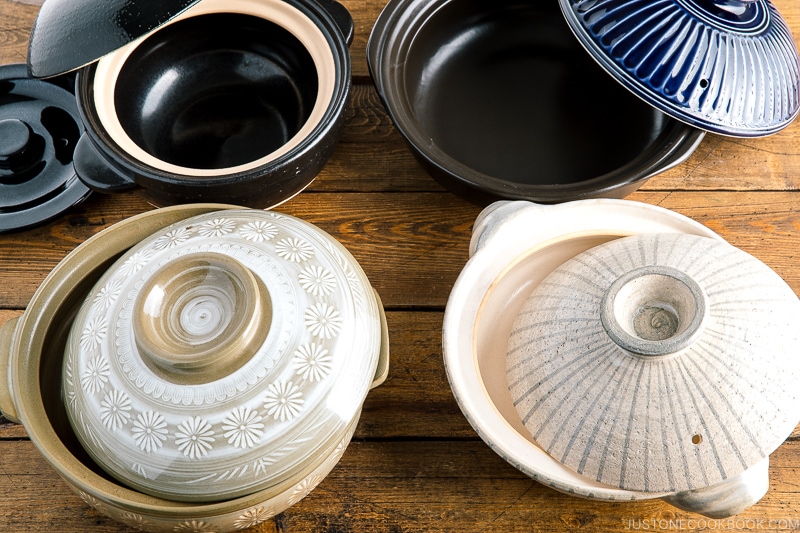
Choose the Right Donabe Size
If you’re cooking for 4 people, I recommend a No. 9 (9号, 9-go) donabe. For other sizes and servings, see the guide below:
- No. 5 (6 inches / 14–16 cm): Serves 1 person
- No. 6 (7.5 inches / 17–19 cm): Serves 1 to 2 people
- No. 7 (8.7 inches / 20–22 cm): Serves 2 to 3 people
- No. 8 (9.4 inches / 23–25 cm): Serves 3 to 4 people
- No. 9 (10.6 inches / 26–28 cm): Serves 4 to 5 people
- No. 10 (12 inches / 29–31 cm): Serves 5 to 6 people
Best Donabe for Coil-Top Electric Stoves
For a coil-top electric cooktop, I recommend the Ginpo Kikka Blue Donabe, which is available in two convenient sizes.
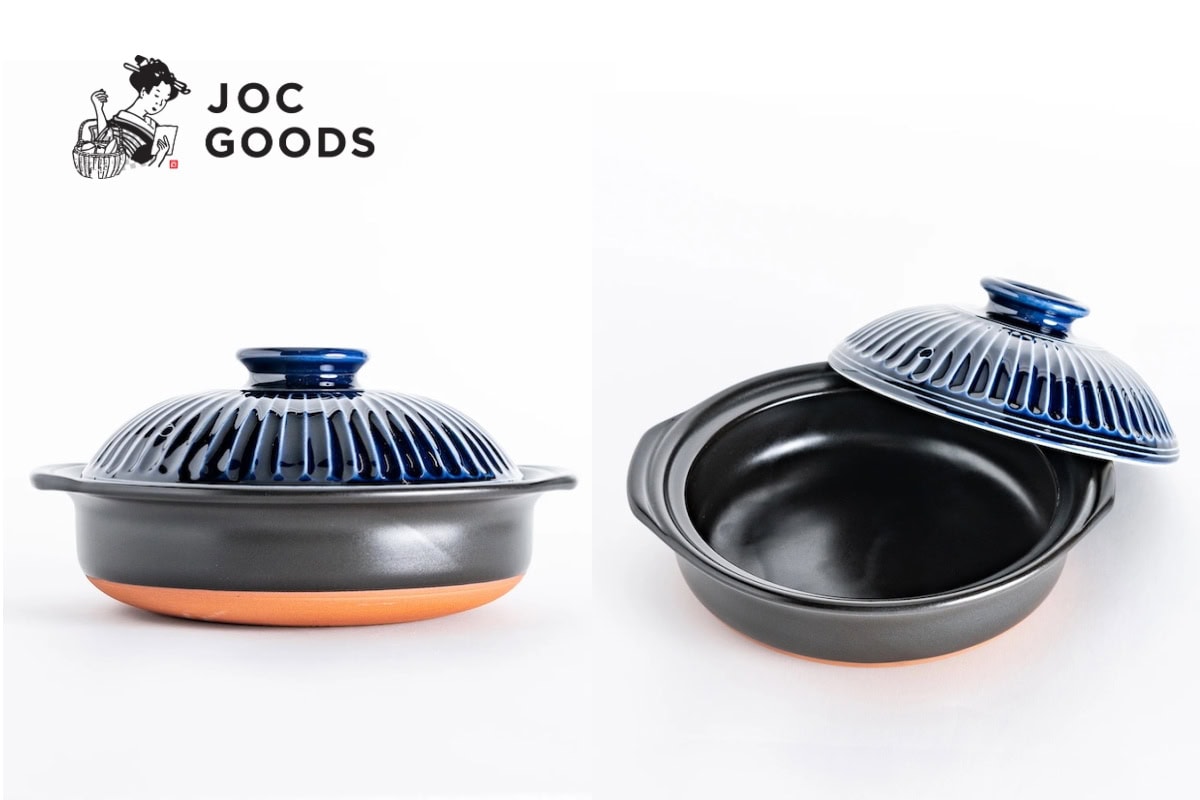
These glossy black earthenware pots are meticulously crafted with a unique ceramic coating process, ensuring even and consistent heat distribution while retaining warmth for extended periods. The smooth, glossy glaze not only resists stains and odors but also makes cleaning a breeze.
What I especially love is the traditional chrysanthemum-shaped design on the domed lids, which elevates these pots into stunning centerpieces, perfect for intimate dinners or special occasions.
Sturdy and versatile, these pots are compatible with open flames, ovens, and microwaves, making them an indispensable addition to any kitchen.
Best Donabe for Induction Heating Stoves
Here are a few selections of donabe we carry at JOC Goods. They are engineered to work on induction cooktops, direct-flame burners, and radiant heat stoves, making them valuable assets for modern kitchens.
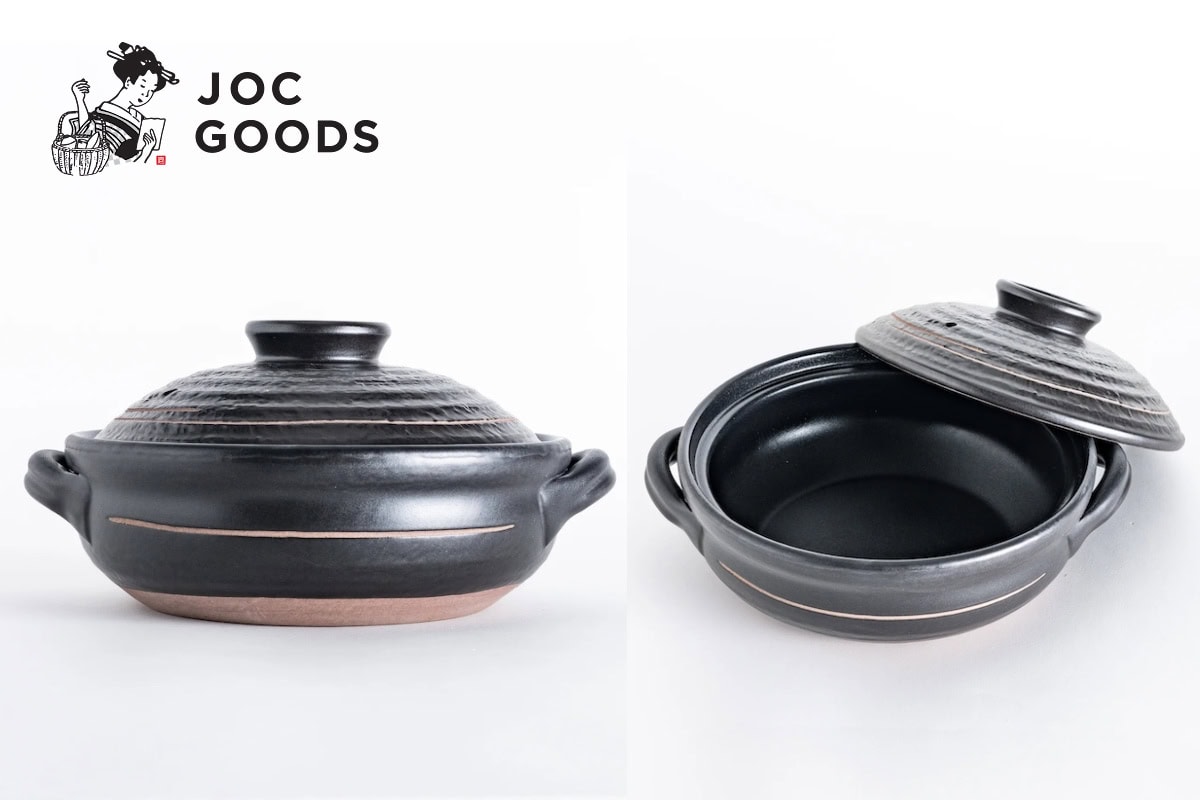
Best Donabe Rice Cookers
You can make delicious rice in a regular donabe, but there are some donabe designed specifically for cooking rice. It’s worth investing in if you are not using an electric rice cooker.
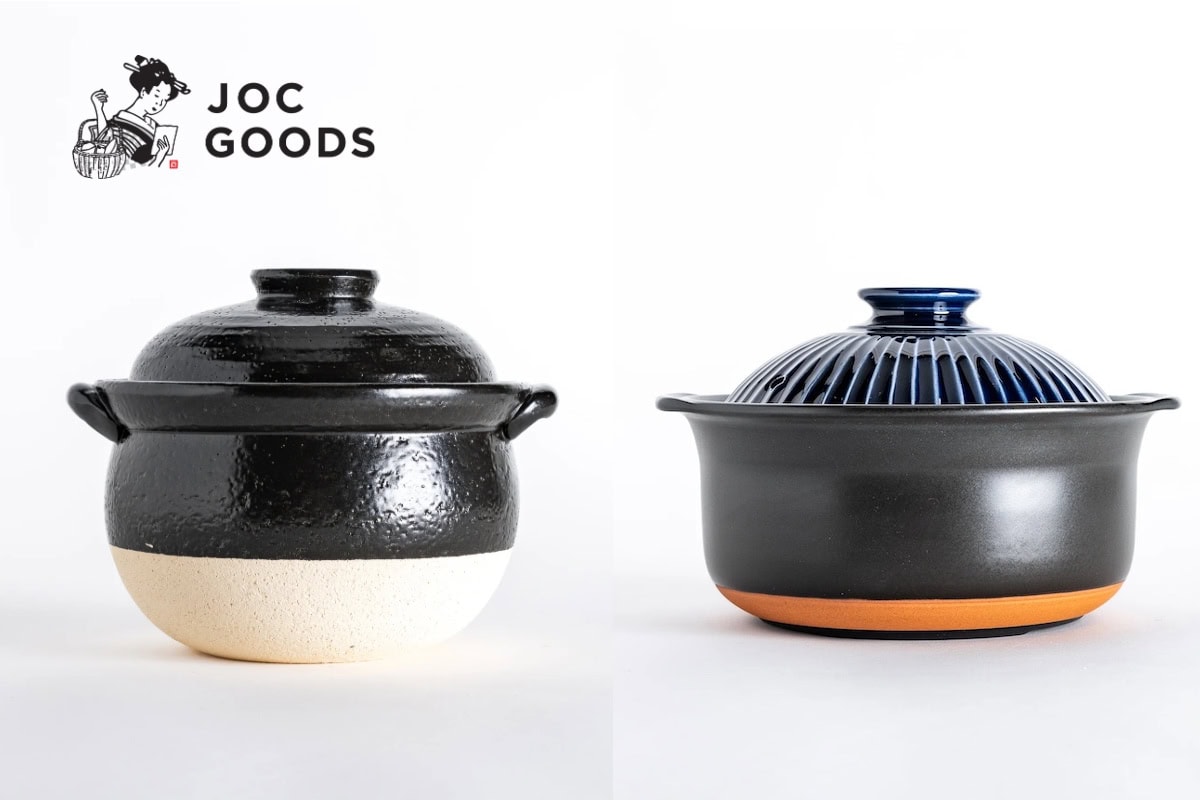
- Non-stick Comfort 3-Cup Rice Donabe (left) — I like this non-stick donabe rice cooker with its rustic, minimalist design. It boasts several features that make it excellent for preparing perfectly cooked rice, including a two-lid system, exceptional heat transfer capability, and a non-stick glaze.
- Ginpo Kikka Lapis 3-Cup Rice Donabe (right) — I love how its clever internal lid makes cooking rice effortless. Thanks to the handy internal water level line, you can prepare up to three cups of perfectly fluffy rice without even needing a measuring cup.
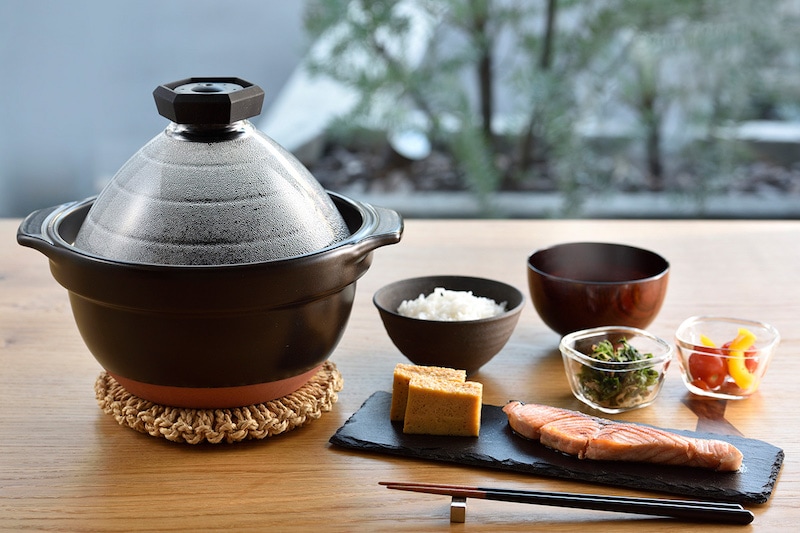
- Hario Gohangama (above) — I also have a Hario donabe rice cooker that cooks 2–3 rice cooker cups of rice. I like its functionality. It has water lines, the glass lid makes it easy to see inside, and the whistling cap lets you know when it‘s almost done cooking. It’s quite sturdy, so I don’t need to worry about chipping.
How to Season and Care for Your Donabe
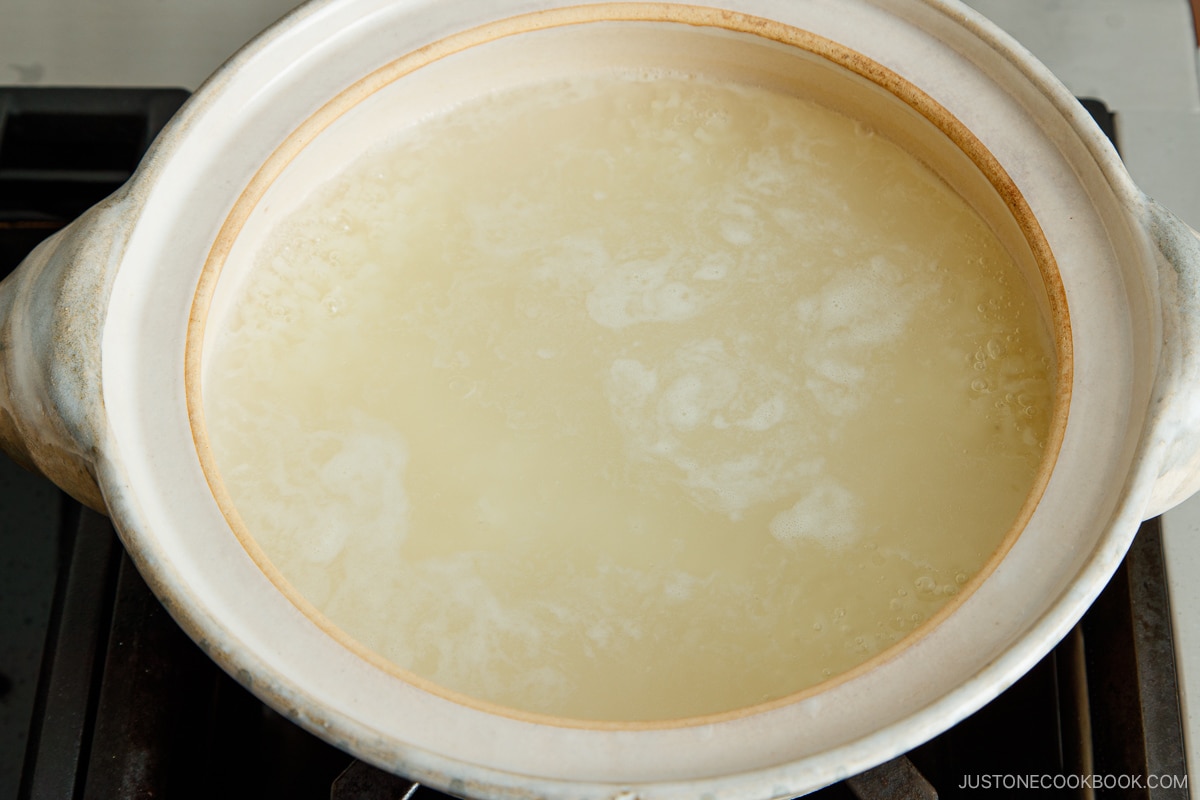
When you purchase a brand-new donabe and take it out of the box, you must season it before using it. In Japanese, this seasoning process is called medome (目止め).
Please read this tutorial: How to Season Your Donabe.
NEVER put your donabe in the dishwasher. Make sure to dry the bottom of your donabe before using it!
FAQs
Traditional donabe can only be used on open flames (gas stoves), and most of them are not compatible with electric stoves (including glass tops) or induction cooktops unless otherwise specified.
While it is possible to heat donabe on an electric stove, optimal heat distribution for cooking with donabe is achieved using an open flame. Therefore, the use of a heat diffuser is not recommended.
The easiest solution is to invest in a portable butane gas burner for your traditional donabe. My family uses one, especially for cooking hot pot dishes and teppanyaki right at the table. It’s a fantastic addition to your kitchen if you enjoy communal-style cooking and dining at home.
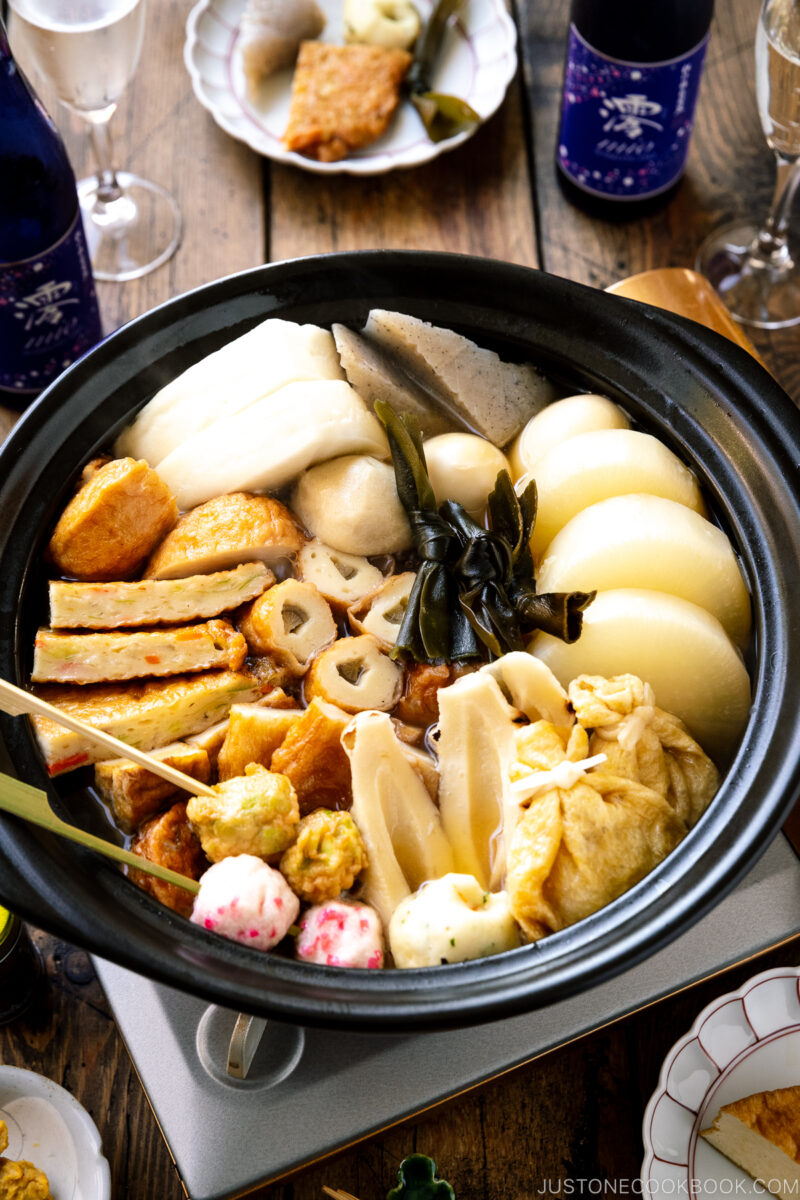
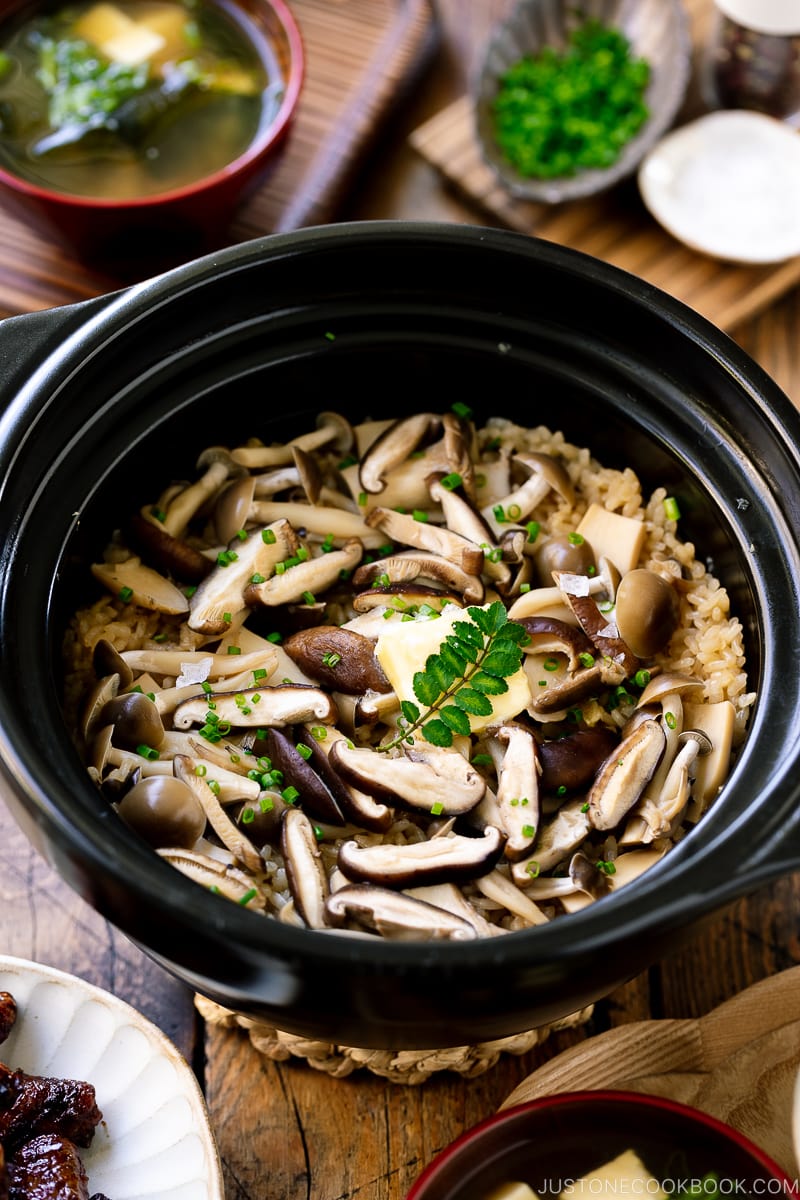
Why I Enjoy Clay Pot Cooking
My readers are often surprised that I use my donabe regularly. When I’m short on time, I make hot pot. I prepare the ingredients while my family takes over the cooking! I chop veggies and protein while the rice cooks, and then we come together to cook dinner as a team. All jokes aside, here’s why I enjoy clay pot cooking:
- Aesthetic appeal. I love presenting beautifully crafted donabe at the table. The rustic donabe adds a unique touch, making the dining experience special!
- Communal cooking. Hot pot meals bring people together. Some of my favorite memories are of family and friends gathered around the table, sharing food, stories, and laughter in a cozy, interactive dining atmosphere.
- Flavor enhancement. The porous clay of a donabe retains heat evenly, making it ideal for slow cooking that brings out deep, rich flavors. The natural minerals in the clay also add a subtle earthy taste, especially when steaming vegetables.
- Cultural connection: For me, cooking with a donabe is more than just preparing food—it’s a way to honor and connect with a centuries-old Japanese culinary tradition.
Delicious Donabe Recipes
Here are my favorite Japanese hot pot recipes for you to enjoy cooking in your donabe!
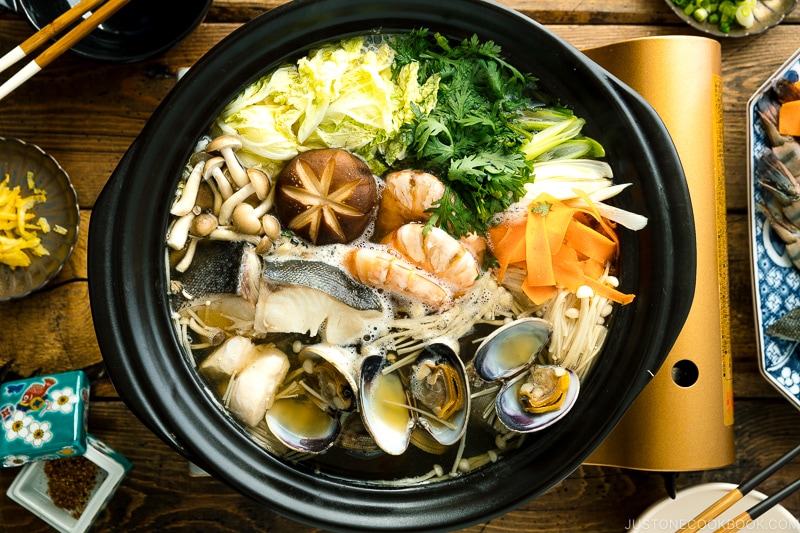
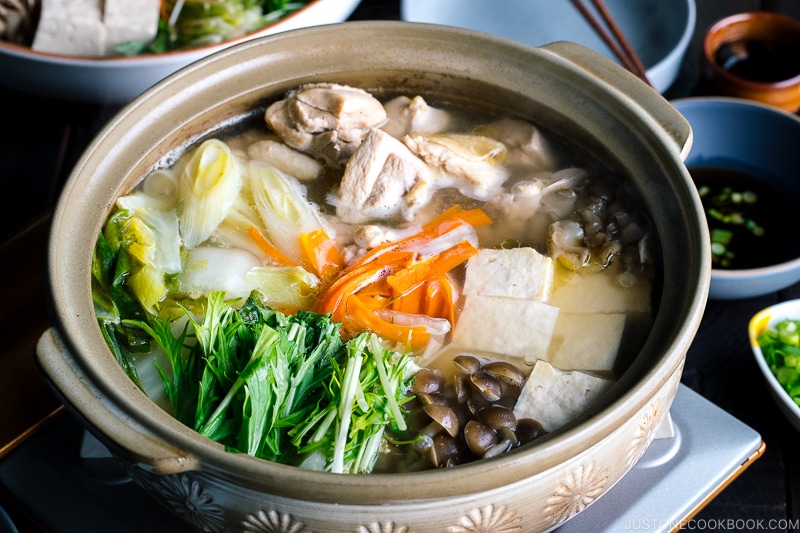
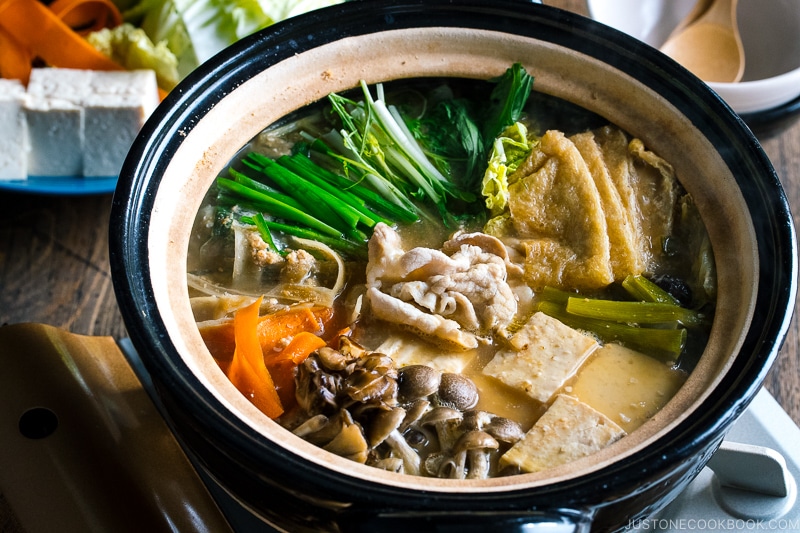
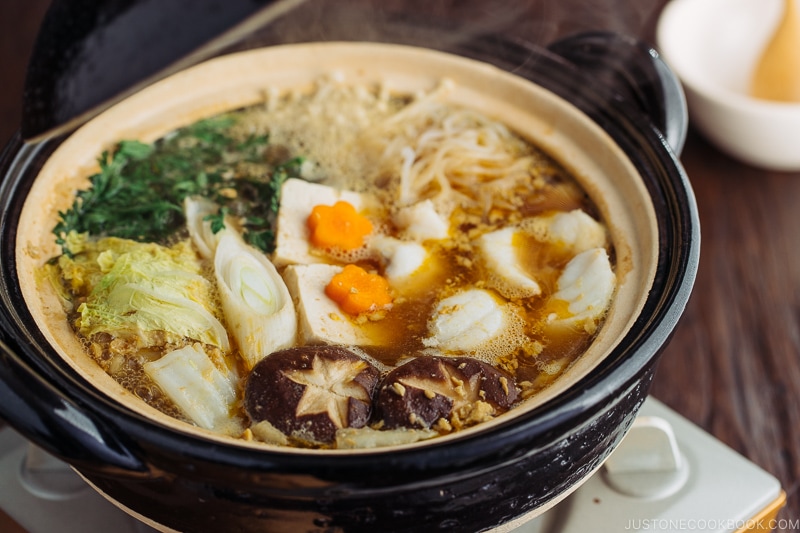
- Sesame Miso Hot Pot
- Monk Fish Hot Pot (Anko Nabe)
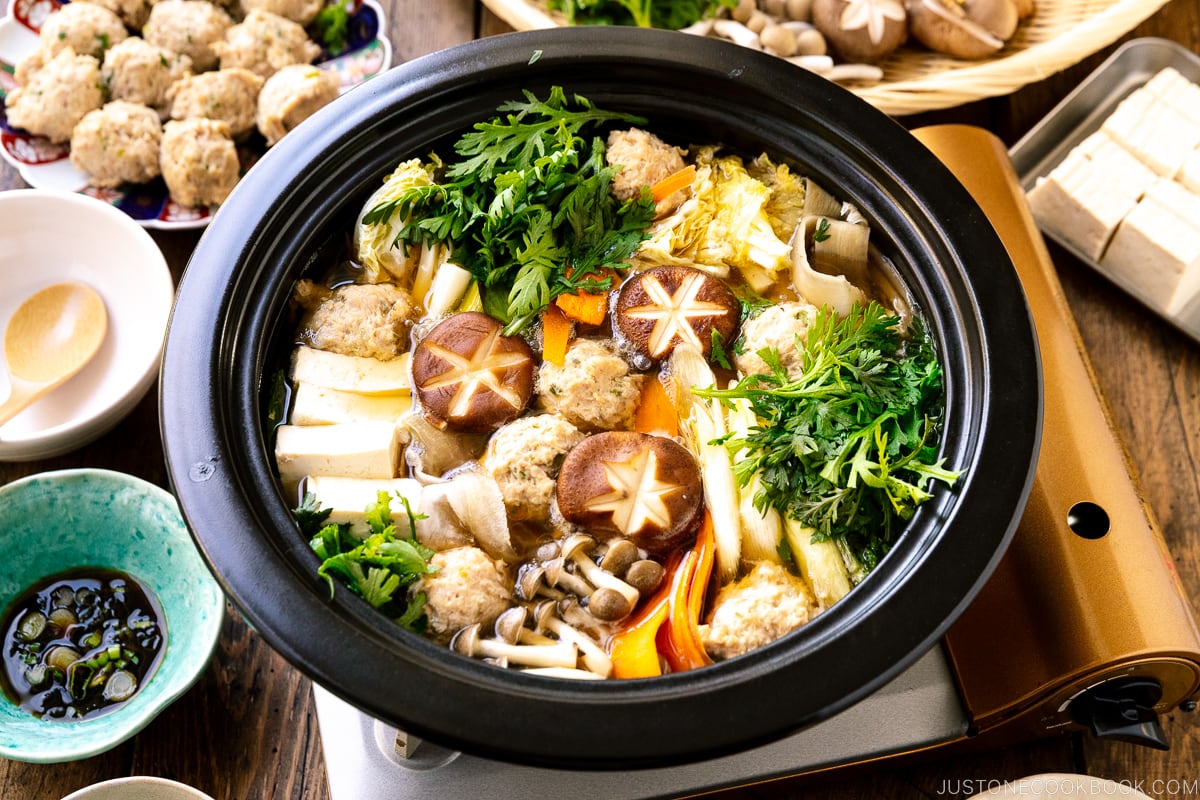
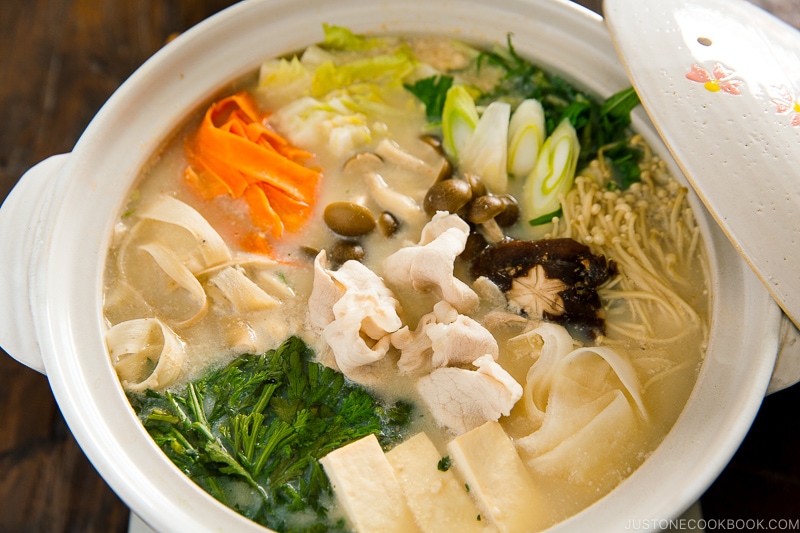
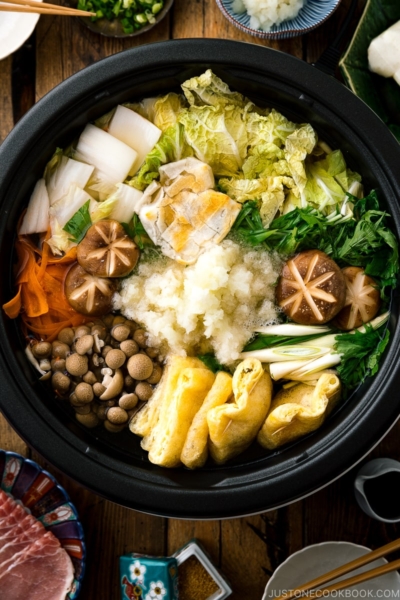
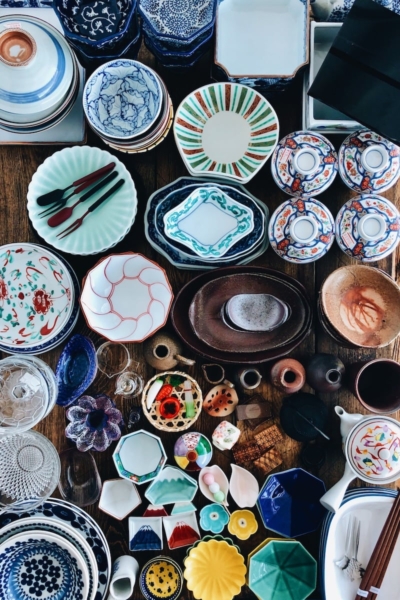
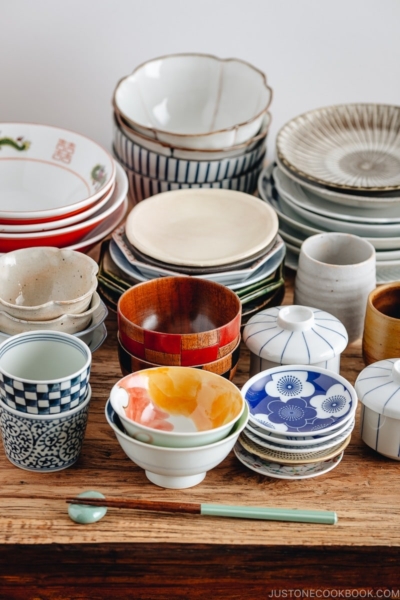
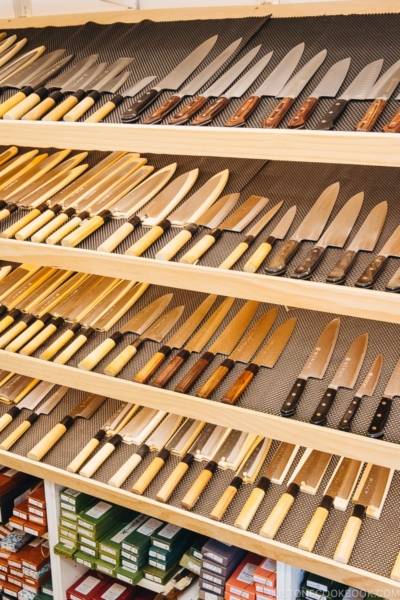




Hi!! I am from Singapore and I am looking for a claypot to cook stews and sometimes some simple stir frying before adding water to make into stew. May I know which claypot is suitable? Will claypot be burnt easily at the base?
Hello Tan! Thank you for checking out Nami’s post.
Ginpo Brand’s Kikka Blue Donabe could be the right match. Regarding the burn at the bottom, it most likely burned quickly if you used high heat. Please set the heat to no more than medium-high. Hopefully, this helps!
I found the information provided on your site very helpful. I was looking for a donabe for a gift and wanted a recommended one from an authoritative source. Because the recipient has an electric stove I purchased the Ginpo Kikka Donabe off of Amazon. Unfortunately it arrived with the ceramic lid broken into several pieces. I saw a few other purchasers mentioned the same thing. Maybe it’s okay if it ships within Japan but risky if shipped overseas? Just posting this for others to avoid disappointment.
Hi Shirley,
Thank you so much for your kind feedback—I’m truly glad to hear it’s been helpful! Shipping packages outside of Japan can indeed be challenging, as I’ve seen firsthand how carelessly they’re sometimes handled. Despite our best efforts at JOC Goods to package items with multiple layers of bubble wrap, occasional breakage still happens. I believe shops or manufacturers that fail to take proper precautions really shouldn’t ship overseas until they fully understand the handling process.
On a positive note, now that we offer our own donabe in our shop, we’re able to link directly to our products. Soon, we’ll also be introducing the Ginpo Kikka donabe to our shop, so we’ll be sharing our own links rather than directing to other sources.
Thank you again for your support!
Hello,
Can you still cook non-rice dishes in the rice cooker donabe? Do you have to adjust the recipe or cooking method in any way?
Thank you for your time.
Hi, Lili! Thank you for reading Nami’s post.
Yes! The Donabe rice cooker can also be used to cook other foods; however, it cannot be used for deep frying.
Hi! I’m a little confused on purchasing authentic donabe. I have a gas stove so I don’t have to worry about that but Ginpo on Amazon says it’s made of ceramic and doesn’t need seasoning etc so I’m assuming it’s not a “real” Banko Ware version that is porous? Or am I reading too much into this? Any tips on what to look out for when trying to purchase in the US? Thank you so much! 🥹
I should add I was looking at the Ginpo’s cream flower one, not the Kikka Blue 🙂
Hello, JLL. Thank you for reading Nami’s post.
If the description stated Banko Ware, that should be it. Here’s a link to Nami’s shop, which includes the Banko ware Donabe. We hope this helps you discover the right kind! 😃 Please see “Japanese Kitchen Tools” on this page.
https://www.amazon.com/shop/justonecookbook
First of all, I want to thank you for your tireless work! Regretfully, I have never commented before, but I consult your website and YouTube channel multiple times a week, and have been doing so for years now — You never fail to have an article on whichever matter I need help with, and I’m rarely ever left with any lingering questions. I don’t know any other sites which are as comprehensive in trying to address every possible aspect or concern as you are! Thank you! 🙂
But today I have one more question: I would like to enjoy tableside donabe meals (especially shabu shabu has won my heart!) with friends, but sadly my apartment does not allow the use of a portable gas burner. I would probably be a little bit concerned about proper ventilation anyway, to be honest!
You mention some donabe (like the Ginpo Kikka, albeit sadly not available where I live) being save to use on coil-top electric stoves — When I search for coil-top, I see an old fashioned type of stove with visible metal spirals. Here in Germany, we mainly use electric stovetops (called Ceran stove) with a smooth glass surface and radiant heat (they’re not induction, but it does look similar). Do you know whether these are also appropriate?
If yes: My idea of a solution would be a donabe which allows for use on an electric glass-top stove, and then using a small electric glass-top hotplate (much like the ones a lot of other cooking channels use) at the table. Do you think this would work fine?
Thank you so much for everything!
Hi Matt! Thanks so much for your kind words and I really appreciate your feedback. I like thinking about all the possible senarios and questions for my readers. 🙂
Ginpo brand donabe is not a porous pot, so we can use it on glass-top stove (like one you use) or portable electric hot plate (not IH). The majority of donabe requires an open flame cooking (portable butane gas stove), and recently we have more IH-friendly donabe available in Japan. So your best option is to get a ginpo brand donabe (or other brands if you can find) online that ships internationally.
Hope this helps, and we’re happy to answer if you have more questions. 🙂
Nami
i just got a donabe pot in Aldi for $15 (Australia), its only 700ml, not very big for entertaining, but I love it. It’s ok for use on gas, electric coil, halogen, glass ceramic, microwave and oven. The box says it’s made from high quality glazed ceramic. Aldi may bring out bigger ones. Requests may help!
I would like to commend you for the absolute complete newsletter on this topic “Donabe”. Everything there to make sure you know the different brands what each is used for… etc. So much respect for your attention to detail. I love eating shabu shabu and feel like my routine is limited. Reading your newsletter today expanded my world of hot pot cooking and I am now going to get a Donabe. Weve just been using a pan. Thank you again for your excellent newsletter.
Hi, Michelle! Thank you very much for your lovely feedback!
It meant a lot to Nami and everyone at JOC.🥹 We hope you’ll continue to enjoy Nami’s newsletter and recipes. Don’t hesitate to get in touch with us if you have any questions about Donabe cooking! We are always happy to help!🫶🏻
I can only admire how thorough your topic of Japanese cuisine in this website. I’m from Indonesia who at the moment is deep into cooking Japanese cuisine due to watching Netflix series and have been using this website as my referal to understand the ingredients of Japanese cooking. Upon watching “What Did You Eat Yesterday”, there’s this episode where Shiro is using donabe to cook and I immediately want one! …only to be confused with the size of donabe I need. That is when I try my luck to come into this website and here you are! You have no idea how I am tremendously helped by your website. Thank you, thank you, thank you!
Hi, Dyla! Aww. Thank you so much for taking the time to share your story and for the kind feedback!🥰
We’re thrilled to hear you love our website and all we shared with you. We hope you will continue to enjoy cooking with us. Happy cooking!